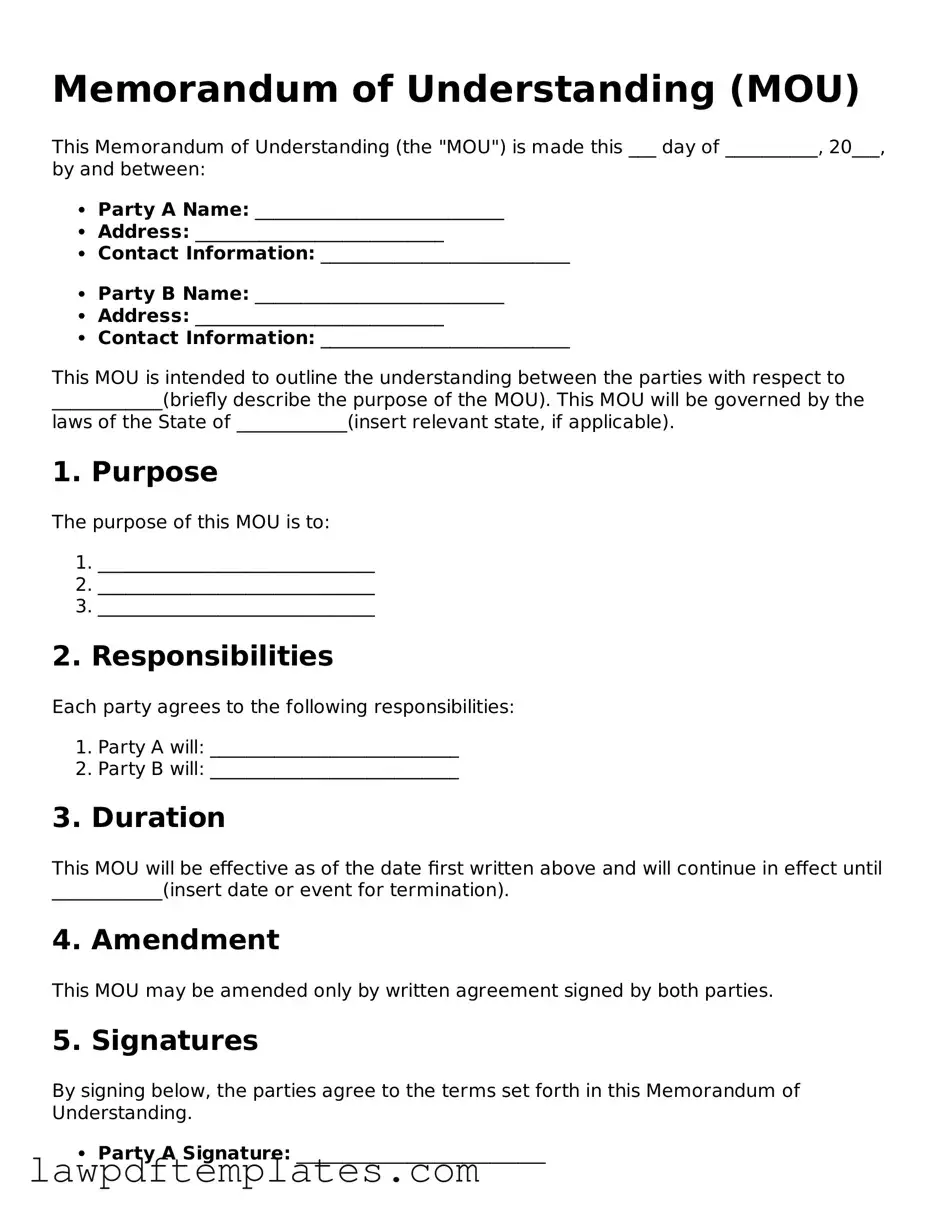Memorandum of Understanding (MOU)
This Memorandum of Understanding (the "MOU") is made this ___ day of __________, 20___, by and between:
- Party A Name: ___________________________
- Address: ___________________________
- Contact Information: ___________________________
- Party B Name: ___________________________
- Address: ___________________________
- Contact Information: ___________________________
This MOU is intended to outline the understanding between the parties with respect to ____________(briefly describe the purpose of the MOU). This MOU will be governed by the laws of the State of ____________(insert relevant state, if applicable).
1. Purpose
The purpose of this MOU is to:
- ______________________________
- ______________________________
- ______________________________
2. Responsibilities
Each party agrees to the following responsibilities:
- Party A will: ___________________________
- Party B will: ___________________________
3. Duration
This MOU will be effective as of the date first written above and will continue in effect until ____________(insert date or event for termination).
4. Amendment
This MOU may be amended only by written agreement signed by both parties.
5. Signatures
By signing below, the parties agree to the terms set forth in this Memorandum of Understanding.
- Party A Signature: ___________________________
- Date: ___________________________
- Party B Signature: ___________________________
- Date: ___________________________
This MOU represents the entire understanding between the parties and supersedes any prior discussions, agreements, or understandings.
